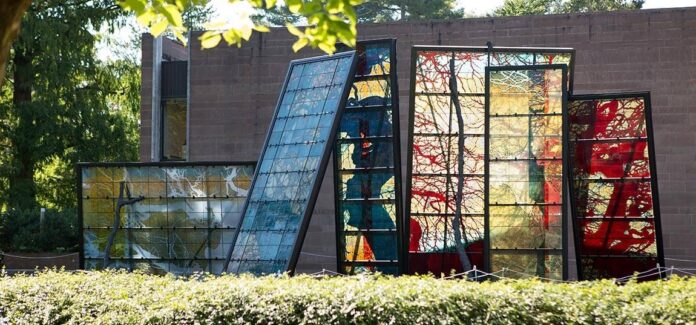Stained glass combines man-made materials with nature and It’s also one of my favorite kind of art work to look at. I found a cool article on the history of stained glass and the culture surrounding it, which I dive into below!
“Stained Glass and the Culture of the Spectacle” Excerpt
“Such a spectacle was, of course, not a uniquely modern phenomenon. In the Middle Ages coloured glass and precious stones formed part of a visual spectacle in manifold ecclesiastical spaces which encouraged the beholders to transcend from the material to the immaterial, an experience brought about through the play of light and colour. Such displays were not lost on the Victorians, since glass transparencies were frequently used in forms of popular entertainment and manipulated by optical devices, new materials and the moving picture to produce a visual culture which scholars have associated with a ‘modern’ era. For instance, in a thought-provoking article which highlights the intervening role that stained-glass transparencies played in the development of optical recreations, John Plunkett argued that transparencies were ‘one of the earliest forms of popular optical recreation and provided the basis for the development of subsequent screen media like the phantasmagoria, cosmorama and diorama’, not to mention later developments in photography and cinematography. What Plunkett does not emphasize, however, is the way in which the revival of stained glass occurred simultaneously with the development of these forms of visual entertainment, lighting effects in theatres and optical exhibitions such as the Eidophusikon (from 1781), Panorama (1791), phantasmagoria (1802), kaleidoscope (1817) and the Diorama (1823). Each of these relied on translucency and glass in one form or another for their effects, although uniquely the translucent medium of stained glass produces image and effect without the aid of any mechanical device, just light itself… Thus, Martin Harris viewed the glass transparency as more effective than oil painting primarily because it brought in ‘real light’ and was therefore a closer imitation of nature.” (Allen, 2012).
.
REVIEW
Stained glass is a beautiful medium that I always enjoy looking at. This article delves into the history of stained glass across different time periods, and talks about how it is viewed as an art form and what stained glass became in the modern era. I think the combination between man-made products like glass and natural sun or moon light is a genius idea of connecting the two. It makes the piece of art ever changing depending on the natural conditions of the venue that it is placed in. I feel inspired by stained glass and its history in regards to my capstone in that sense. I plan to make something in nature or in a natural environment, so how can I use nature as a benefit towards my piece rather than a hindrance? How can I make nature itself a part of my project? I think this opens a bunch of thought bubble doors for me to consider. I want there to be a reason my project is in the location that it is, and I want that to connect to the natural world. Stained glass is an awesome example of how to do that.
REFERENCES
Allen, J. (2012). Stained Glass and the Culture of the Spectacle, 1780–1862. Visual Culture in Britain, 13(1), 1–23. https://doi.org/10.1080/14714787.2012.641778
Applewhite, D. (2015). The Starn brothers’ sculpture resides on the front lawn of the Princeton University Art Museum. Princeton University News. https://www.princeton.edu/news/2015/09/24/major-new-campus-sculpture-uses-glass-and-metal-evoke-nature




